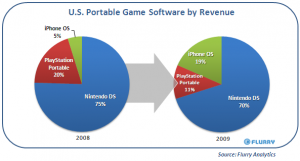[I originally was going to post this at lategaming.com but it’s more about the economics of internet stuff rather than games related]
It’s a “sparkle pony” to be sure, but in the end it’s just a skin on their pony entity and some attributes. It is one of the few mounts which can work as a ground mount and a flying mount (and therein is the tactical advantage) but really it’s a picture of a sparkly pony.
In case anyone thought that virtual item sales weren’t a big deal in the traditional MMO world, this morning Blizzard announced the online sale of a new “celestial steed” for use in WoW. These mounts cost $25 (on top of the retail price plus $15 monthly subscription). So in a world of free games and virtual items selling for a dollar or two, how popular could a $25 sparkly flying pony be?
Well, the queue for their purchase was at least up to over 91,000 people waiting in the queue earlier today. When I took a screen shot, it had fallen to “only” about 85,000.
90,000 X $25 = $2,250,000.
In one day. From one item. In a game that isn’t free to play anyway.
Something tells me we really, really haven’t mapped the extent of the market for fast, frictionless sales of online goods — “objects” that have a low cost of creation and essentially no cost of duplication. Even 90,000+ times.
On the other hand, getting a picture of a sparkly pony from an artist on the Internets is probably going to run you $25 at least anyway and if this one gives you a tactical advantage in a game that you play a lot anyway then it seems like a bloody bargain (I don’t play WoW FTR).
The cost of duplication and use is something that is extremely important here. This is a sure-fire illustration of how the Internets can be used to make money but it’s giving a ‘bad’ message here in a market which is trending towards free (as Chris Anderson would put it). This is a one-off feature in a software environment that has a subscription model. Think how the record companies should be responding to this. Music has a much larger target market obviously and all of the musicians I know would be extremely happy to have 90,000 people queuing up to buy anything, even something priced at $1 (but imagine how happy they would be if it was $10).
It seems ironic that there is still a question over the AppStore with the prices trending towards $1 (if you include flash sales) and that is whether apps have been priced much too low. And I think that in many cases they have been. And we’re likely to see it repeated with the iPad.
But Blizzard is showing here that with a dedicated core of fans, you can make a lot of money in a day selling something that is entirely digital, limited in use, limited in lifespan and only works inside their environment.










